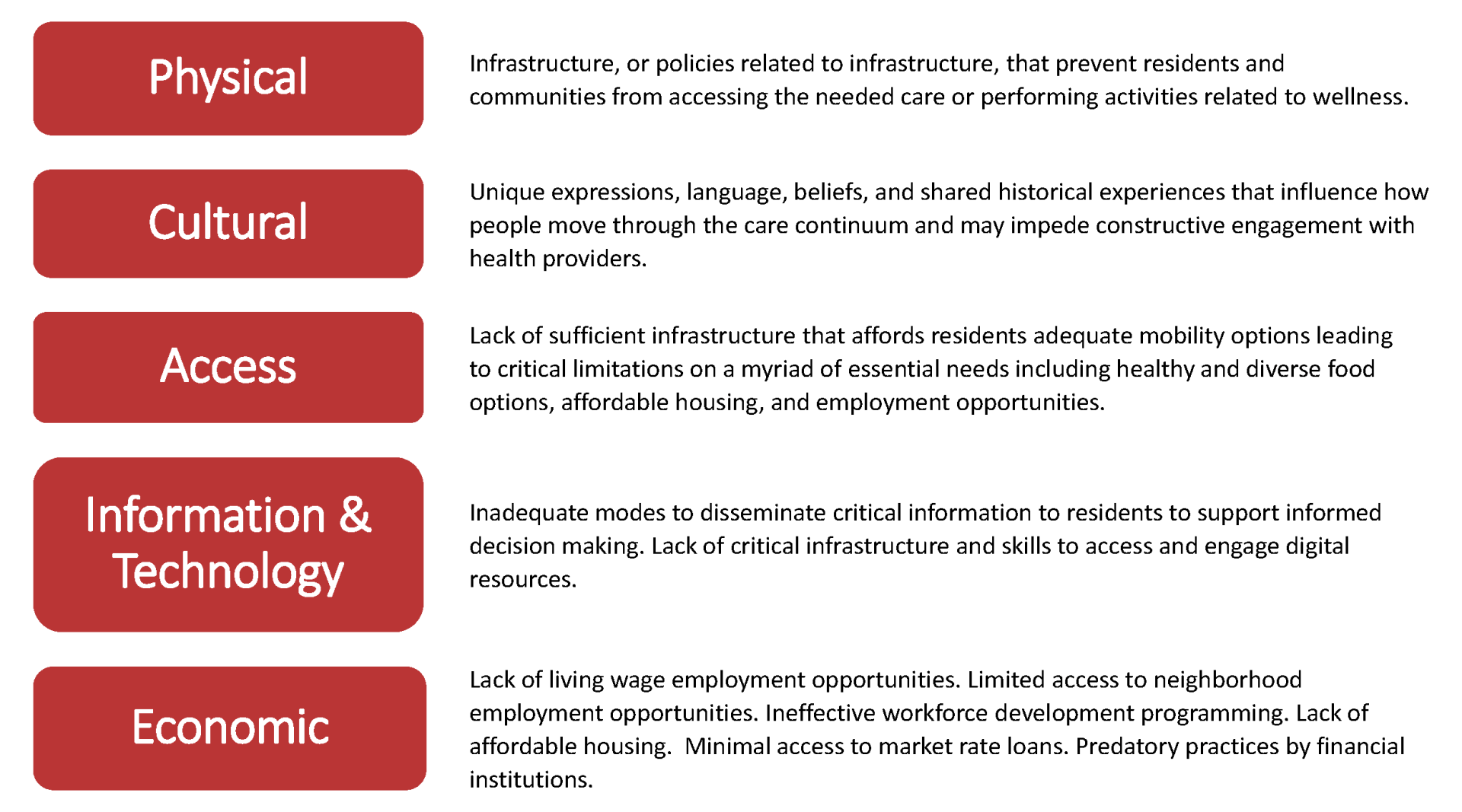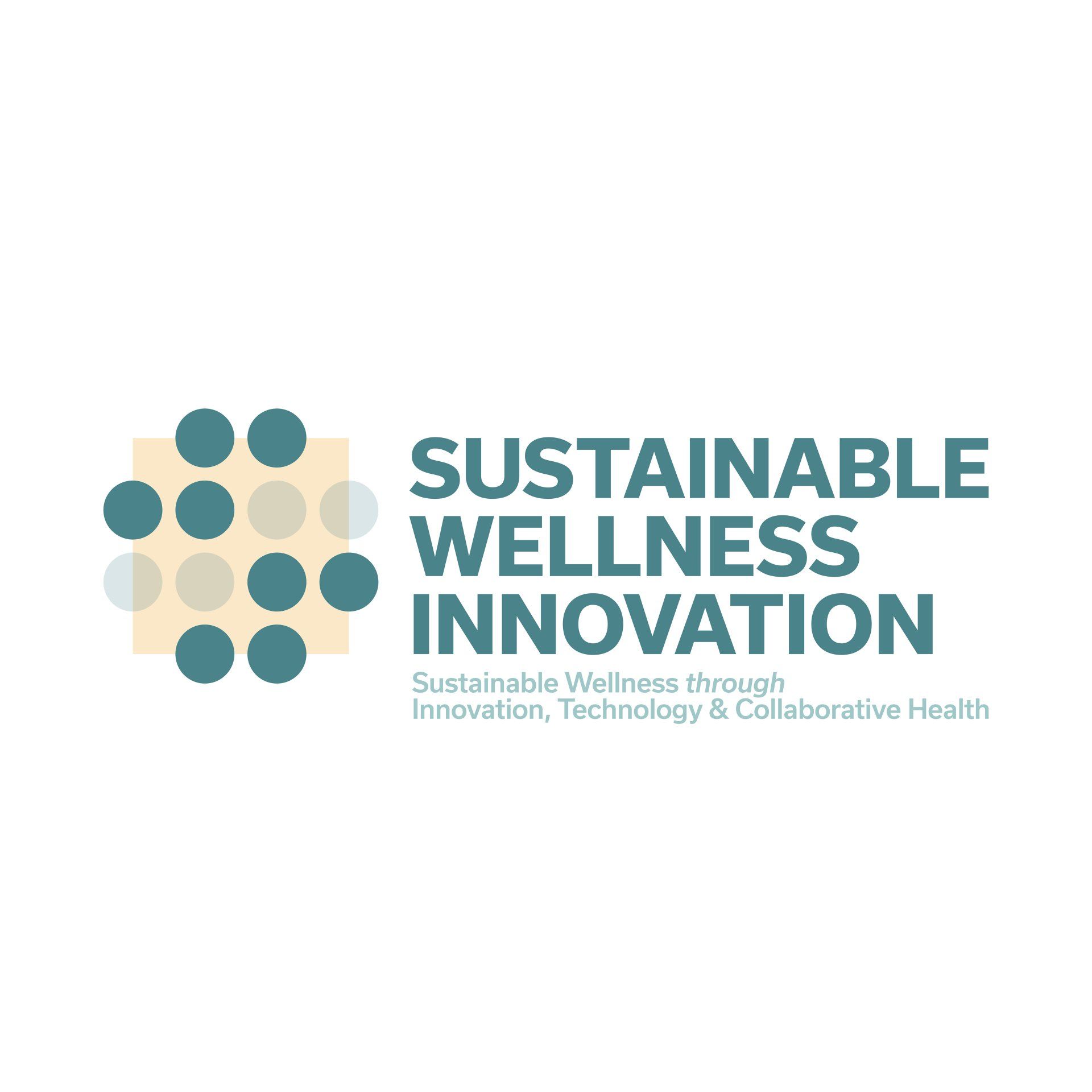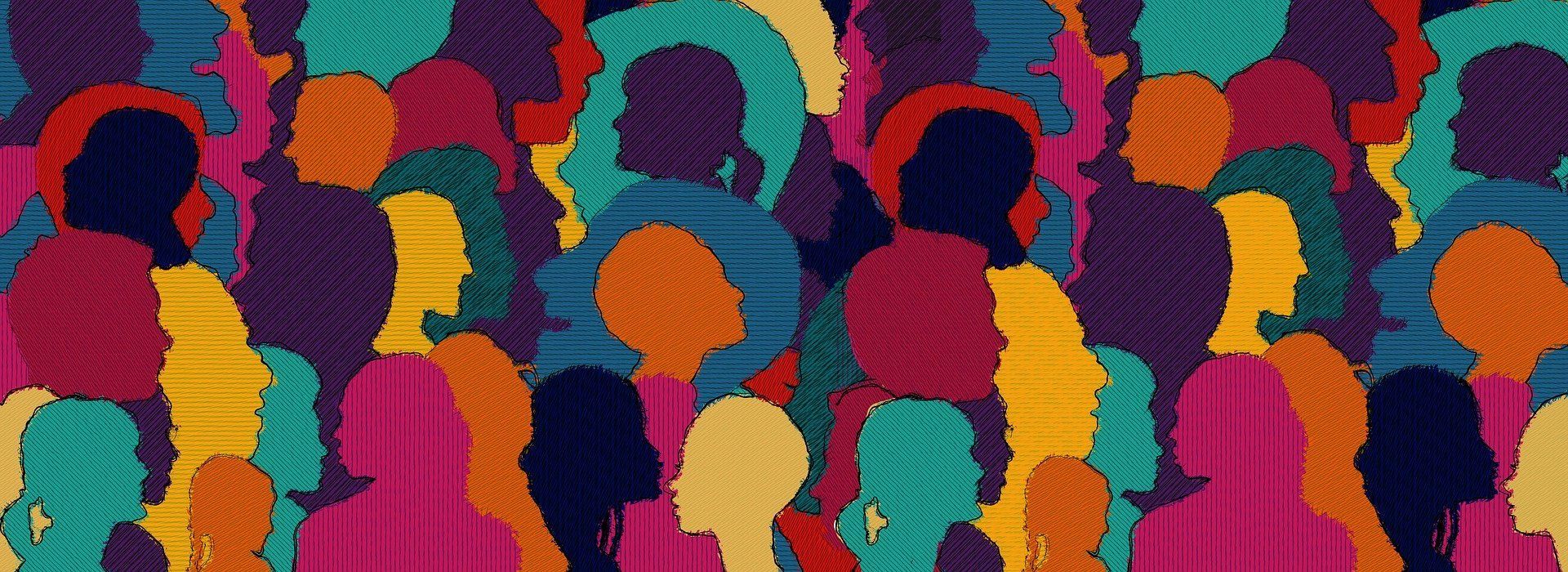We define healthy cities in terms of community goals and outcomes that illuminate concrete needs, barriers, and solution opportunities.
Imagine a community where one can rise for an early morning jog, stop at the local grocery store for coffee and fruit, pop into the neighborhood health clinic to check on a persistent cough, then make way via bus, train or bike to a well-paying job not more than twenty minutes away. This community has adequate affordable housing, diverse and sustainable employment, and accessible and reliable transportation. Its residents feel safe and have access to current and emerging technology, quality education, physical activity, nutrition, and, of course, adequate health care.
This example is illustrative of many measures of a “healthy” community; but, for many residents, such can only be imagined.
Systemic disparities and biases create significant barriers to achieving health and wellness for all communities.
Communities that struggle to obtain or maintain key elements of a healthy community require targeted resources and efficient solution deployment to address deficiencies. From Seattle, to Chicago, to New York[1] many cities have acknowledged that what underpins historical lack of success in building, maintaining, and supporting healthy communities is a reluctance to acknowledge and address systemic disparities and biases caused by issues such as racism and gender inequality. Many municipalities, philanthropic organizations, and local community organizations provide services and resources to address the resulting symptoms of these inequities; however, healthy communities cannot emerge until we remove the barriers that keep residents from accessing those resources and keep communities entwined in racism, gender inequality, and other systemic issues.
Physical, digital, and socioeconomic barriers impede healthy communities.
There are numerous ways to categorize barriers that impede a community’s ability to obtain and maximize resources to eliminate systemic disparities and equities. Below is a structure to help identify the barriers, define them, and then develop sustainable solutions to address each.
Developing and deploying solutions for healthy cities will require structured collaboration, standardized data, and technology to capture, track, and scale impact. Solutions that address physical, digital and socioeconomic barriers will broaden the impact of future efforts.
Complex Problems Require Collaboration
COVID-19 has highlighted the devastating and disparate impact health crises have on vulnerable communities. At the same time, the pandemic has inspired a renewed focus on pledging resources to those communities. As efforts evolve, community stakeholders must be mindful of the strength and success of coordinated solution development and deployment as opposed to fragmented support or duplicated efforts. Complex problems that span neighborhoods, entities, and municipalities cannot be solved alone.
To create healthy cities, we must first collaborate to effectively design and deploy technology-enabled solutions that redress health inequities. Grass roots organizations are closest to the pain of their communities and know the immediate and sustained needs of that community; philanthropic organizations have access to data and funding; thought leaders have the benefit of deep analysis; technology partners have the platforms that can be leveraged and scaled; and cities want their residents to be happy and healthy. Cross-sector collaboration brings together expertise, insight, and representation across all stakeholders, ensures that the right problems are being address, and leads to better design and implementation of sustainable solutions.
Using Data to Understand Impact
Solving health inequities requires implementation of holistic, sustainable solutions that remove barriers and allow for stakeholders to effectively redress root causes of those inequities. Problems as complex as workforce development, food and housing insecurity, and internet and technology access span systems, jurisdictions, and service providers; current lack of data standards across systems makes it difficult to truly understand the impact of current and future solutions. However, expansive data analytics of health indicators would allow philanthropic groups, community organizations, and cities to see correlations and downstream impact early on. We must measure health through broad lenses that capture both the root causes and related symptoms to truly understand inequities and the impact of targeted solutions.
Technology is Key to Sustainability
Technology can play a critical role in collecting and monitoring data as well as solving specific problems related to health inequities. Having the data that supports health disparities is but one component of understanding how to address the issues that restrict equitable positive health outcomes throughout urban environments.
Technology solutions allow dynamic and creative responses to complex problems. Technology also holds the ability to replicate and scale solutions so they can apply to an array of challenges. Whether incorporating new urban design aspects (such as flexible design of streets), advanced analytics (including machine learning, data science, and artificial intelligence), or sensing networks (nodes in our environment that collect and communicate data), technology will be a critical component in developing sustainable solutions that can be scaled to other uses and cities.
For example, City Tech’s
Urban Heat Response solution
integrated NASA Landsat data on climate and weather data to improve design and infrastructure to mitigate urban heat islands. The outcome was a user-centric tool leveraging environmental data to identify hot spots for further analysis, test the effects of city interventions designed to reduce heat, and create a baseline for future urban planning.
It is crucial that these technologies be developed and implemented while applying a racial equity lens to ensure they do not create more biases and reinforce existing barriers.
Healthy cities are achievable if we work together.
No one can thrive while racial, social, and economic injustice prevent everyone from contributing to and benefiting from a city’s success. Many organizations are already addressing symptoms of these injustices and working towards a healthier community. However, before we can truly address root causes, we must first remove the barriers that prevent communities from even accessing these resources in the first place. Data and technology will play an essential part creating equitable, sustainable, and scalable solutions for healthy communities – but only if we can work together.
-----
[1] Chicago, New York, Seattle, Minneapolis, Madison, and Portland are among American cities that have launched racial equity initiative to address systemic structural issues underpinning poverty, health, unemployment, etc.
About the Author: Angela E.L. Barnes serves as the General Counsel and Director of Legal Affairs & Growth Initiatives for City Tech Collaborative. City Tech is a nonprofit urban solutions accelerator that tackles problems too big for any single sector or organization to solve alone. Working with cross-sector teams, City Tech develops scalable, technology-enabled solutions to make cities happier, healthier, and more productive. In her role, Angela handles all legal matters and provides strategic leadership for the company’s growth. Angela is co-leading City Tech’s racial equity and inclusion framework and she is also spearheading City Tech’s Healthy Cities Initiative which will address multidimensional barriers facing communities that struggle to achieve positive health outcomes, ultimately producing and deploying a data analytics tool accessible to community organizations, governments, and other community health stakeholders.
Angela is a passionate advocate for providing services and resources to underserved geographic and demographic communities has extensive. Her non-profit board service includes, current Board Chair for the Center on Halsted, former Co-Chair of the GLAAD Chicago Leadership Council, former Board Chair for SGA Youth & Family Services, former Board Chair for Chicago Coalition for the Homeless (current Executive Committee member). Angela co-founded SHE100, a philanthropic giving circle of lesbian and queer women supporting organizations throughout Chicago. She also leads the Women’s Action Council at the Center on Halsted focused on outreach and inclusion of the queer women’s community in Chicago.
Angela was awarded her Juris Doctor from Columbia University and Bachelor of Arts from Wellesley College. She is a Certified Compliance and Ethics Professional (CCEP) and a member of the Society of Corporate Compliance and Ethics (SCCE).





